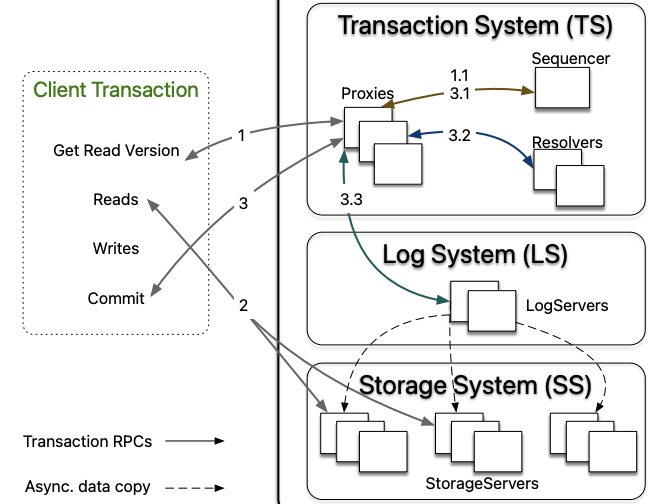Tigris is a globally available, S3 compatible object storage service. Tigris utilizes FoundationDB's transactional key-value interface for its underlying metadata storage. This blog delves into the topics of serializable transactions, the mechanics of transactions within Tigris, and concurrency control.
Serializable transactions are a transactional consistency model that guarantees that the outcome of concurrent transactions is equivalent to a serial execution of these transactions. In other words, transactions executed concurrently under serializable consistency appear to be executed one at a time in some sequential order. This provides a strong guarantee for correctness, ensuring that the execution of transactions doesn't create anomalous behaviors, such as dirty reads or lost updates, which can occur in weaker isolation levels. FoundationDB, used by Apple, Snowflake, and others, is such a system. It provides the same consistency and isolation guarantees as Spanner - strict serializability and has a fantastic correctness story through simulation testing.
Serializable Transactions in Tigris
Tigris employs FoundationDB's transactional key-value interface for its underlying metadata storage. Transactions are initiated automatically by Tigris upon receiving a request, as they are core to every operation.

Tigris executes all operations within the context of a transaction by default, enabling atomicity for all operations and allowing the application to perform strongly consistent reads after writing to the database. In the following section, we will review how transactions work inside Tigris.
Transaction Coordinator
A Tigris deployment consists of multiple workers that receive and process the requests. Upon receiving a request, one of the Tigris servers acts as a request coordinator. The coordinator assesses whether the request can be handled locally or must be forwarded to the transaction owner using the information available in the transactional context. By reading this context, the coordinator can determine if the request is new, an interactive, transactional request that can be handled locally, or an interactive, transactional request that should be forwarded to its owner.
Managing Transaction Sessions
The session manager in Tigris is responsible for managing transaction sessions, which are created each time a new transaction request is made. The session manager attaches a transactional context to each session and tracks all sessions created by the server using a session tracker. A session object is responsible for managing the lifecycle of a transaction. Each session utilizes the storage layer to communicate with the underlying storage engine to determine whether to commit, rollback, or signal a failure. For each new transaction request, the session manager attaches a transactional context to the session and tracks all sessions created by the server using a session tracker.
Concurrency Control
Many systems use the time of acquiring all locks to establish the serial order among transactions and to guarantee atomicity and isolation. For instance, Spanner uses True-time for determining the commit timestamps when all locks are acquired. CockroachDB uses the hybrid-logical clock, a combination of physical and logical time. Tigris provides lock-free concurrency control using FoundationDB, combining OCC and MVCC to order transactions. This is achieved by a sequencer which determines the serial order by assigning a read version and a commit version to each transaction. Proxies offer MVCC read versions to clients and orchestrate transaction commits.

Conclusion
We believe developers should not have to bear the responsibility of working around the use of transactions and complicating their application architectures. Instead, storage systems should provide ACID transactions by default and strong data consistency mechanics, simplifying the applications and making them more manageable for developers.
